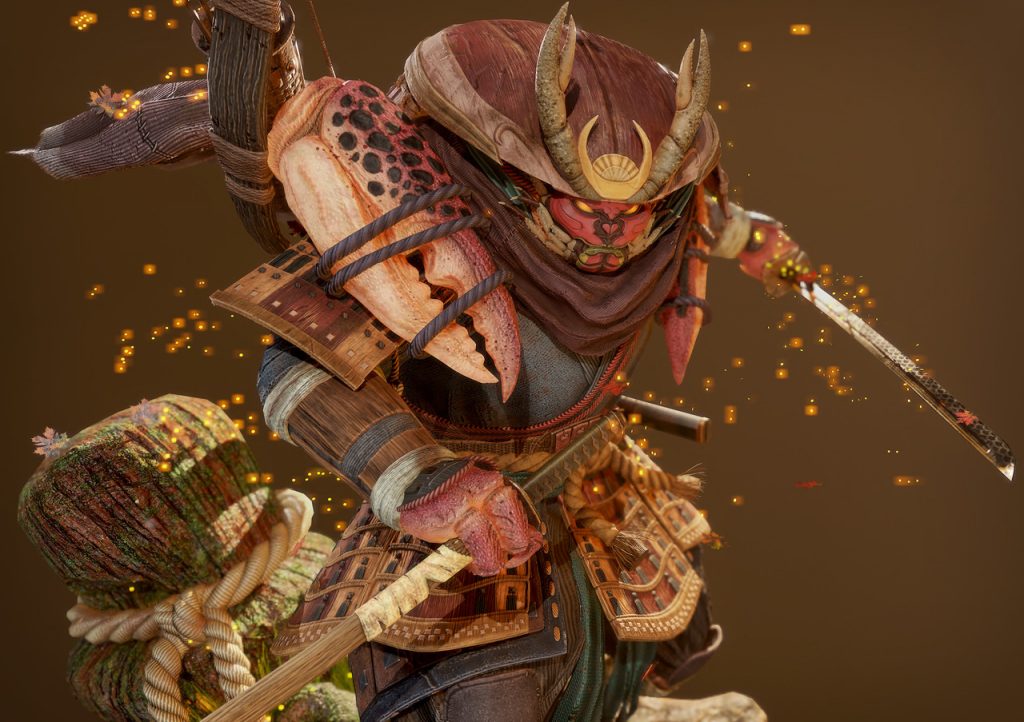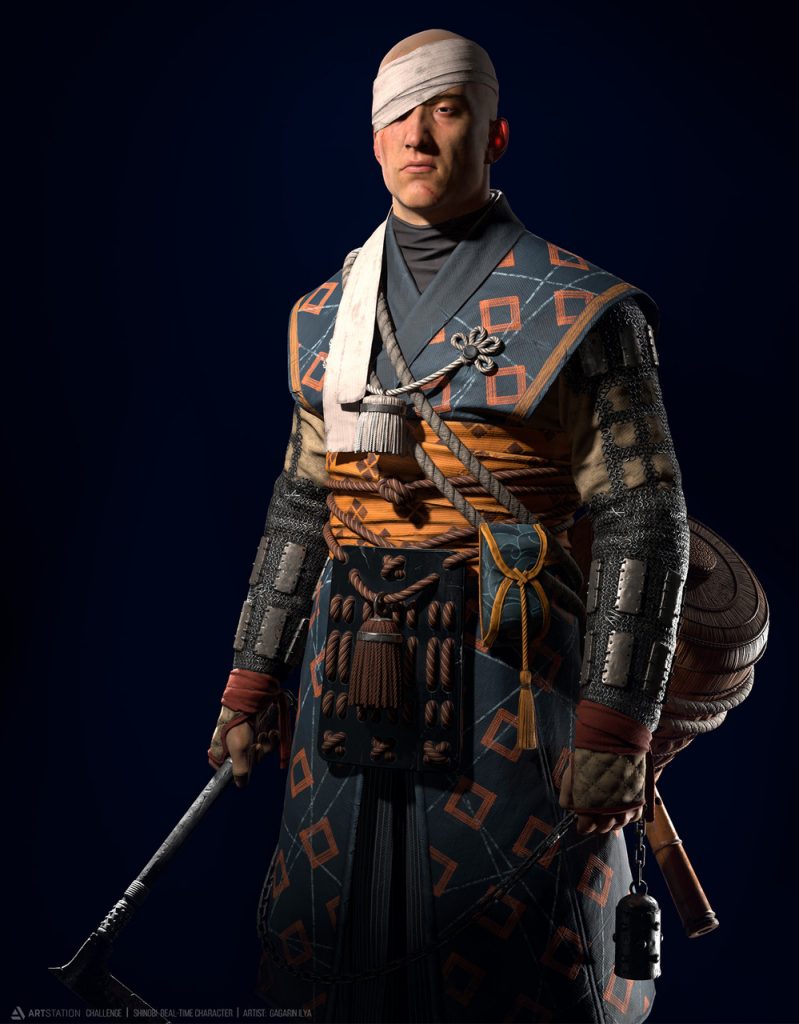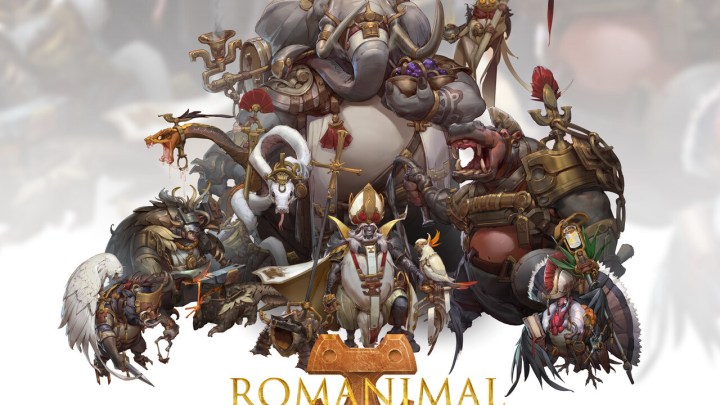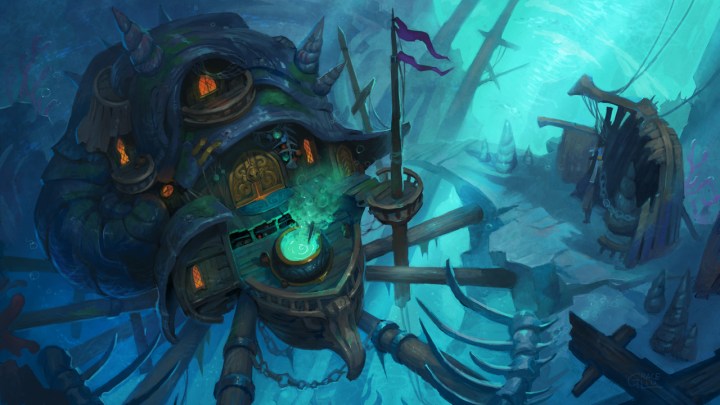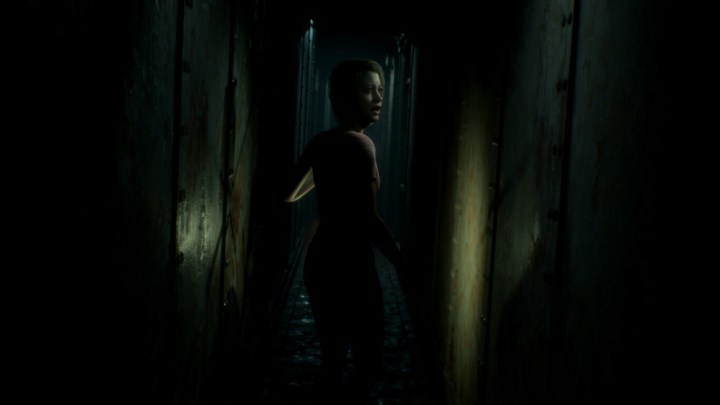Feudal Japan Challenge: Game Character Winners Interview
In the latest ArtStation Community Challenge, a record breaking over 1300 joined the Game Character category. Participants in this challenge were tasked with creating one game character from Feudal Japan rendered in a real-time engine with no paintovers and a maximum polycount/tri-count of 100k.
Browse all Game Character entries of the Feudal Japan Challenge.
The winners Melan Barba, Juan Novelletto and Ilya Gagarin share their strategies, obstacles and advice for future challengers.
Tell us about your concept for the character.
Melan: Back then, I was already planning to do a Samurai Character for my next portfolio piece and when I saw the ArtStation Shogunate challenge I was completely in awe with how many great Character Designs there were so I decided to join the 3D realtime game art. For my concept I choose the Samurai Crab by Koh LJ. I went for this concept because of its unique style, a combination of a crustacean and a Samurai. For this work, I decided to do a realistic representation of the samurai carb.
Juan: When I saw the character that Andrew Mironov made for the challenge, I was amazed by the silhouette and the mystery that surrounded it. I thought I could add a personal touch to it because that is something that I always look for in a concept when I choose one. I don’t like to just do an exact copy of a someone’s design.
Ilya: From the beginning, I knew that I would not have enough time to create a concept on my own so I decided to choose one. I was looking for a suitable concept among plenty of them, and finally decided to choose Shinobi by Giorgio Baroni, (it’s funny that I’m using his concept for the second time in Challenges). Besides the fact that it’s a cool concept, I really like that Shinobi looks like a real person. He’s not a superhero or a monster, but an ordinary soldier with his own problems and experiences. He’s the one who I can empathize with. Because of that, it was very easy for me to imagine him in some kind of game or film. Also, I like the complexity of the design: a lot of fabric and ropes. Since I wanted to practice creating a realistic anatomy and face as well as to create a variety of tricky elements, this concept consisted of everything I needed. That was a real challenge for me but I learned a lot.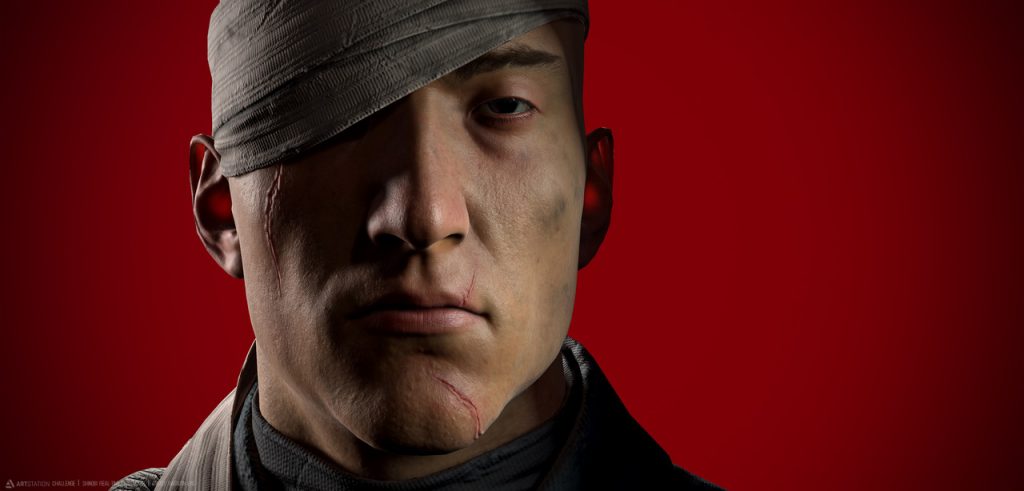
What was your strategy for completing your submission on time?
Melan: It was pretty much the same approach for when I do 3D characters. I usually do the proper workflow pipeline. First I started to research some references including crab crustacean anatomy, crab body detail patterns and some samurai characters. It was all made from scratch starting with Zbrush and blocking some forms and then adding some micro details. For his clothing it was all by hand and I added some surface detail that I created using Substance Designer. I retope/UV mapped It using 3dsMax, texturing was done in Substance Painter and the final render is Marmoset toolbag.
Juan: First, I did a schedule where split the 50 days in four parts: High res 14 days, Low res 14 days, Texture 7 days and Pose and Presentation 7 days. I kept some days open in case of any trouble. For example, in this challenge my hard disk died and I lost two days of work.
Ilya: I had a clear plan for completing everything on time (about two weeks for a retopology and bake, one week for textures, and another week for final edits) besides highpoly production. Even though I used all the available time, I almost failed, (it was pretty nerve-wracking). But actually, it ended up being not as bad as my previous challenge when I didn’t sleep for the last two days before the submission. Two hours before the deadline, I just started to creating the final scene in the Marmoset, working with lighting and rendering. Due to the fact that I was very much in a hurry, I even accidentally uploaded two identical pictures in the final submission. I was literally shaking because of my nerves! During the second challenge, everything went a little calmer but despite the fact I had a whole day left to play with lighting and renders, I sent the final submission in just five minutes before the end of the challenge.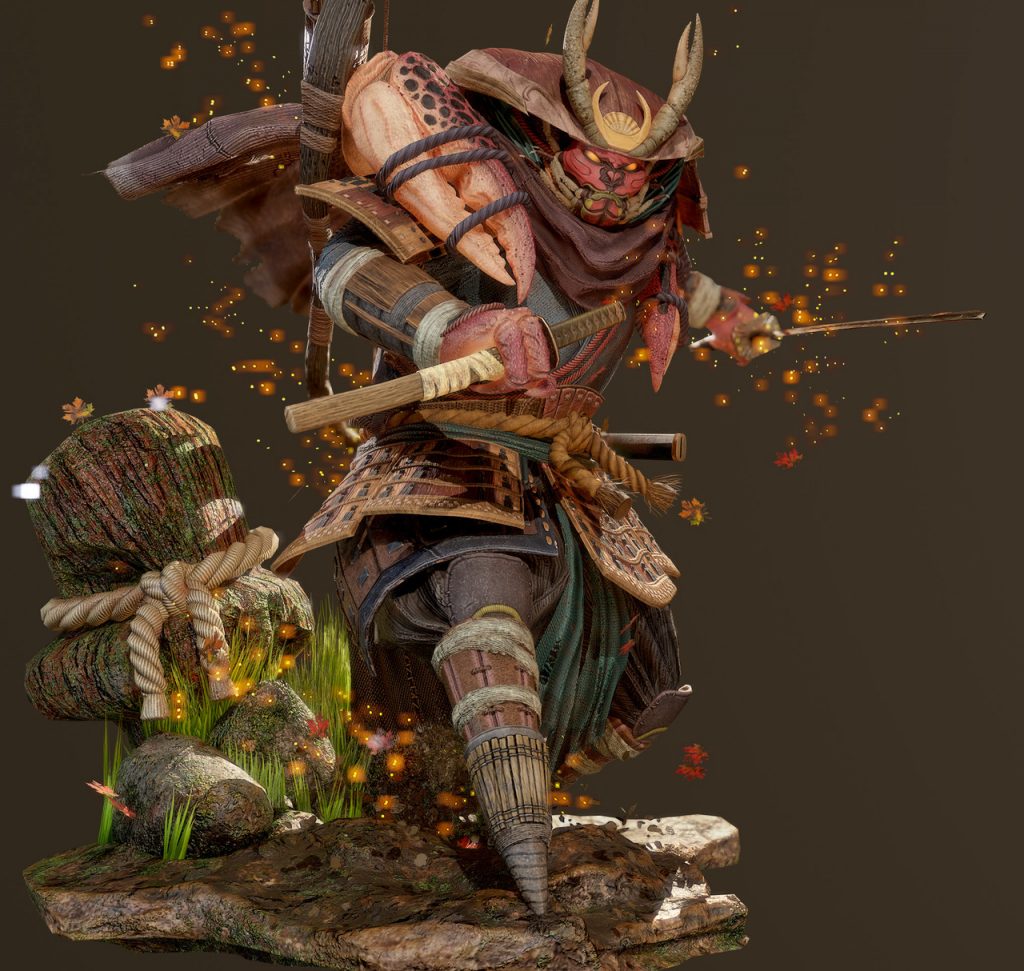
What was the most difficult part of this challenge for you?
Melan: For me I think it was the time management. As a freelancer it’s pretty difficult to balance work and find a proper time to do this challenge. So I decided to cut my sleep time…!
Juan: The most difficult was the stage where I used Marvelous Designer to simulate the clothes of the character, for two reasons: first, the body was hard to simulate because of his weird proportions and shape. Secondly, the complexity of the middle part with the katanas. At that point, I was very frustrated and I almost thought about leaving the challenge.
Ilya: The retopology stage was quite painful. I wanted to save the silhouette as much as possible and because of thatI had to retop a lot of ropes on his belt and legs, even small rivets on the hands that hold metal plates! I barely kept within the allowable polycount. There were also a lot of technical issues. For example, I needed to decide which elements have to be unique and which ones can be symmetrical; how to effectively use the texture space; how to accomplish the approximately same texel for all UDms. These type of decisions were the most difficult for me.
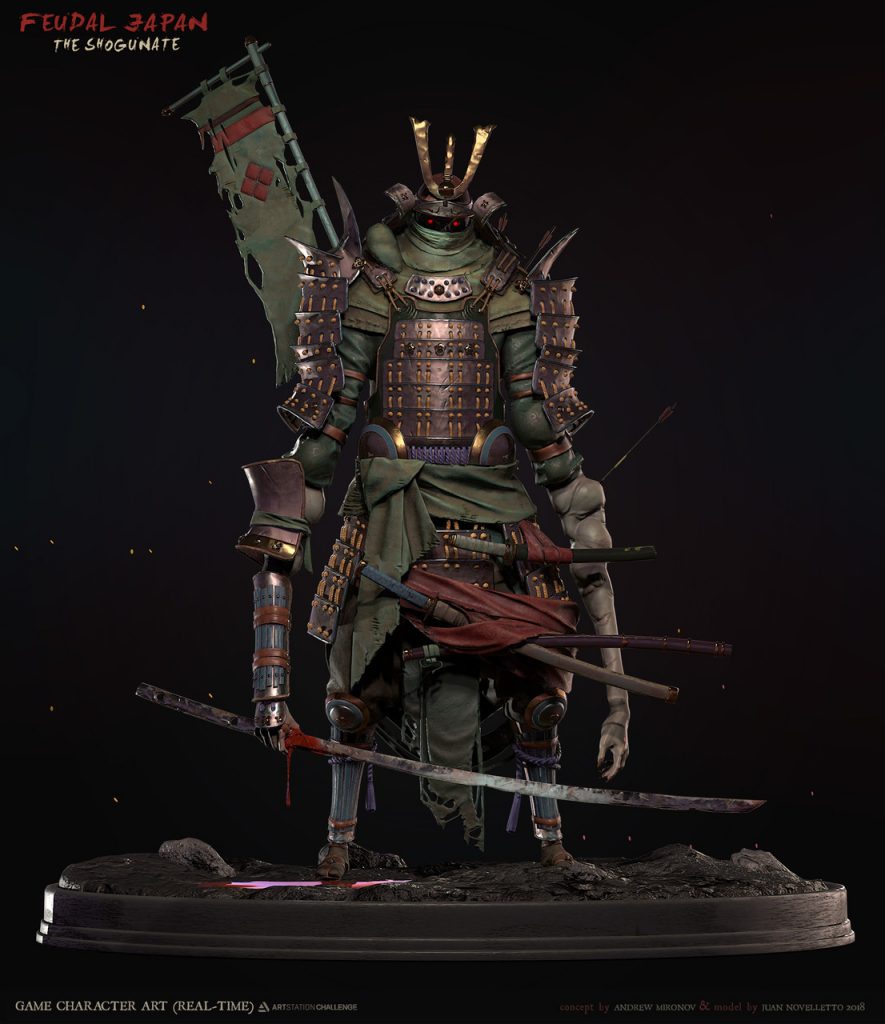
What advice do you have for future challengers?
Melan: Do your best. Always motivate yourself. Be strong don’t be afraid. Practice. Practice. Practice. Eventually you will be a better artist. The purpose for this challenge is to improve our skills which I did.
Juan: Make a schedule and be smart with your time. At the end, if you finished the challenge you’ll learn a lot and have a new piece in your portfolio. Also comment on the submissions of other participants, because an important part of the challenge is to receive and give critiques.
Ilya: I recommend that you choose a concept that will inspire you throughout the whole challenge. It’s not that important if it’s very cool detailed concept or not since you can choose even some sort of simple sketch and then modify it. Many of the artists made very impressive and unique submissions acting this way. But, it’s really important to calculate your strength correctly and consider that work on the design also takes quite a lot of time.
Browse all Game Character entries of the Feudal Japan Challenge.
